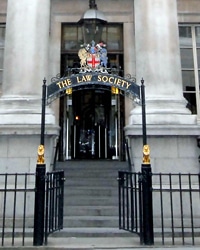
Law Society: Still technically the regulator of solicitors
The Solicitors Regulation Authority (SRA) is to become a distinct legal entity within the Law Society Group, potentially triggering a difficult debate over the division of £73m of reserves.
Though this will provide for clearer financial reporting, the new arrangement does not change the fundamentals of the relationship between the two.
The Law Society is named in the Legal Services Act 2007 as the approved regulator of solicitors and technically it delegates its regulatory responsibilities to the SRA. As a result, the regulator cannot make major changes to what it does, such as who it regulates, without Law Society approval.
With the SRA becoming a separate limited company, however, the society will not directly employ SRA staff as now.
The move is the society’s response to stricter internal governance rules imposed by the Legal Services Board, which aim to ensure the independence of regulatory bodies that form part of a wider organisation that also has representative functions.
In 2018, the board handed the Law Society an unprecedented public censure after finding that it had governance arrangements in place that could have interfered with the independence of the SRA – although there was no evidence they actually had.
A joint statement issued yesterday by Law Society president Simon Davis and SRA chair Anna Bradley said: “We have for some time been discussing our future relationship and have agreed that, given the need to comply by July with new internal governance rules from the Legal Services Board, now is the time to establish the Solicitors Regulation Authority as a distinct legal entity within the Law Society Group.
“This will mean that both organisations can focus on our respective roles while working together wherever appropriate.
“We consider that the new arrangement will not only be more effective but create more transparency for the profession and the public about our roles and responsibilities. We plan that this change will come into effect early summer 2020.”
The SRA’s long-stated goal is for complete separation and independence from the Law Society, but this would require an amendment to the 2007 Act.
The switch does open the door to the SRA becoming a charity, which may mean it would not have to charge VAT on the fees for the Solicitors Qualifying Examination next year.
An SRA spokesman declined to say whether this was the plan. “We are presently focused on moving this forward and incorporating into a limited company. We may return to further issues in due course,” he said.
The Law Society’s most recent annual report, for 2018-19, said it had net assets of £73m, excluding a further £22m in reserves for its indemnity operations.
But it said: “The Law Society net assets comprise assets and liabilities which cannot practicably be divided between all of the respective operating divisions of Law Society Professional Body and the Solicitors Regulation Authority.”
The SRA spokesman would only say that “we are in discussion with the Law Society on appropriate practical arrangements”.
If reserves are somehow split, it could mean that the Law Society no longer has the benefit of any underspend by the SRA.
Practising fees charged by the Law Society – it raised £103m for the current year – can only be spent on regulatory activities and also ‘permitted purposes’, which under section 51 of the Legal Services Act are non-regulatory public interest activities for which the Law Society can nonetheless charge the profession.
In the current year, the Law Society received £32m under section 51.
It is not clear whether the society can also use cash not spent by the regulator that is put into the reserves. And even if it uses these funds for permitted purposes, this frees up other income – such as commercial revenue – to spend elsewhere.
The Legal Services Board is currently reviewing how section 51 is applied, while the Competition and Markets Authority (CMA) is set to review this year how the legal market has responded to its 2016 report.
Speaking in February, Chris Jenkins, economics director at the CMA, said the watchdog wanted to revisit the broader recommendations around regulatory reform – full independence of regulators like the SRA was one of its recommendations.
Former SRA executive director Crispin Passmore said the move to a separate company would improve financial oversight and flexibility for the SRA and should allow it to become a charity.
“More importantly it will allow public scrutiny of the £30m tax that the Law Society raises via section 51. Surely this anachronism will be in the sights of the CMA when it returns to the legal market later this year – it is a far more direct and bigger distortion to our legal market than any other regulatory intervention.”














I used to work at the Law Society. It’s a racket. It made me realise that solicitors are apathetic towards having their hard earned fees stripped from them by what is essentially a mad house – this is why I no longer instruct solicitors. If they cannot protect their own interests then why would I expect them to protect mine!